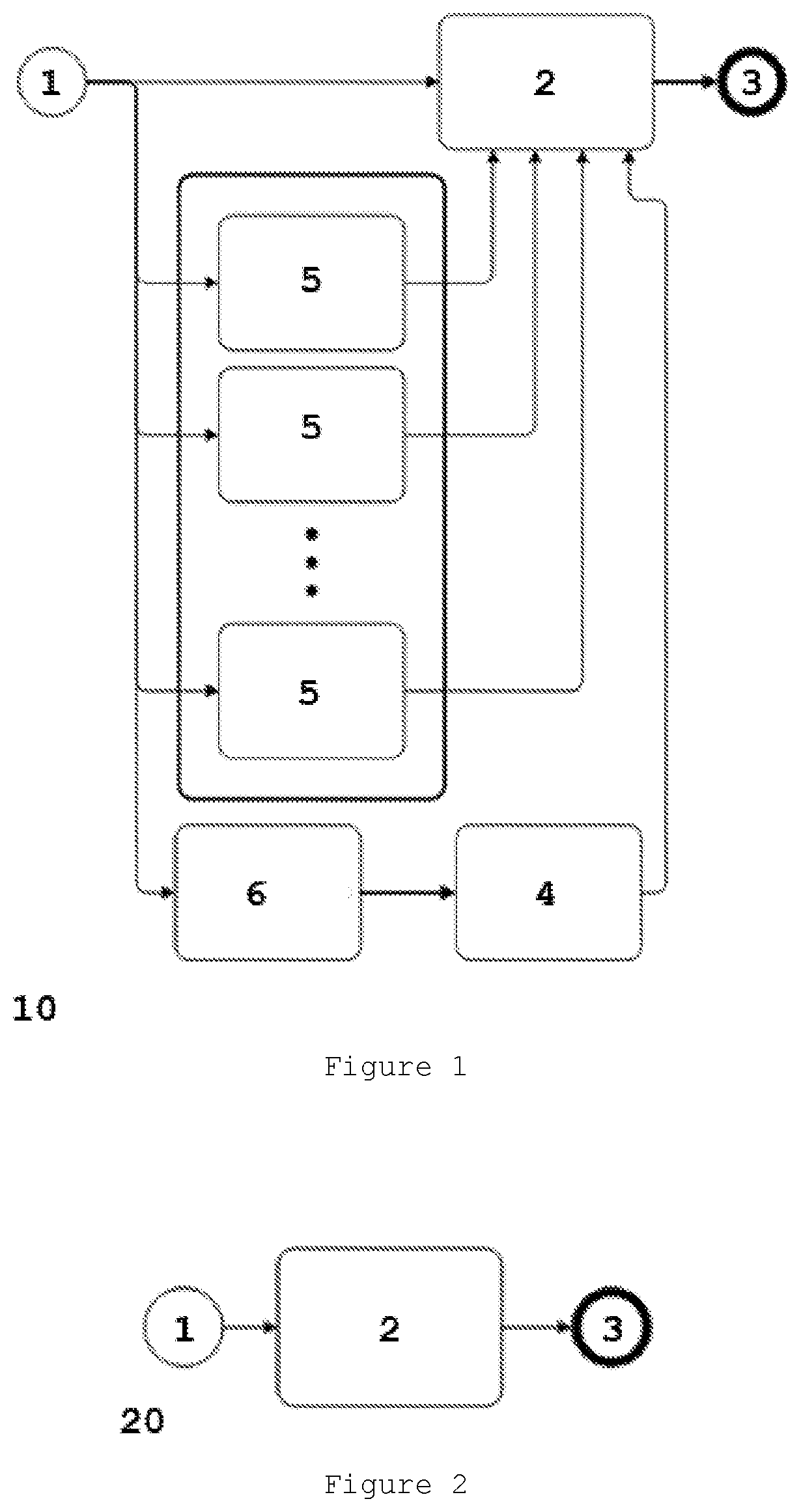Method for detection and classification of non-periodic signals and the respective system that implements it
a non-period signal and classification technology, applied in the field of cytometry, can solve the problems of increasing equipment production costs, increasing the risk of peaks in threshold application, and producing a lower degree of precision with a reduced number of identified parameters, so as to increase the accuracy of biological target detection and increase the precision of pattern detection
- Summary
- Abstract
- Description
- Claims
- Application Information
AI Technical Summary
Benefits of technology
Problems solved by technology
Method used
Image
Examples
Embodiment Construction
[0041]The present invention relates to a method (50) and the respective system that implements it, of signal processing to detect non-periodic signals, in particular, pulses of the Gaussian family, present in a sequence in time of limited duration (from now on only designated by time sequence) (51), and generated by sensors responsible for detecting signals emitted by biological targets, within the scope of flow cytometry techniques for the acquisition of biological information. Throughout the description, the terms signal and time sequence will be used to describe both the method (50) and the system of the invention. In this context, signal should mean the result of the processing carried out by the system, at each moment, of a limited set of data that constitutes a time sequence.
[0042]In particular, the present invention is related to a classifier based on machine learning, which provides an increased precision in the detection of labeled particles associated with biological targe...
PUM
| Property | Measurement | Unit |
|---|---|---|
| energy band | aaaaa | aaaaa |
| speed | aaaaa | aaaaa |
| angle of magnetization | aaaaa | aaaaa |
Abstract
Description
Claims
Application Information
 Login to View More
Login to View More - R&D
- Intellectual Property
- Life Sciences
- Materials
- Tech Scout
- Unparalleled Data Quality
- Higher Quality Content
- 60% Fewer Hallucinations
Browse by: Latest US Patents, China's latest patents, Technical Efficacy Thesaurus, Application Domain, Technology Topic, Popular Technical Reports.
© 2025 PatSnap. All rights reserved.Legal|Privacy policy|Modern Slavery Act Transparency Statement|Sitemap|About US| Contact US: help@patsnap.com



